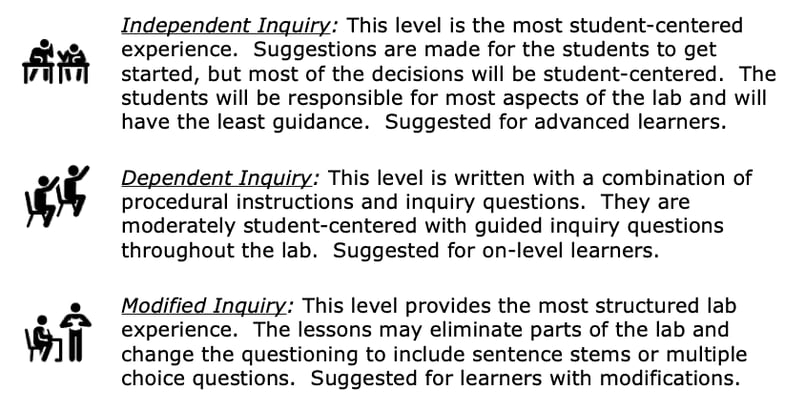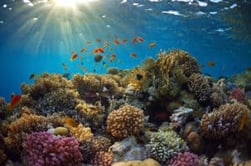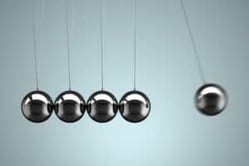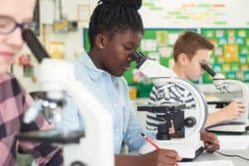Microscope Training Inquiry Lab
Middle School Inquiry Lab on Microscope Training
In this lab students will investigate the basic parts of a compound microscope and learn to create a wet mount slide.
Each inquiry lab will contain an essential question that will drive the lesson and make students think. For this lesson, the essential question is:
- How are objects viewed with a compound microscope, and how do their images appear?
BACKGROUND INFORMATION AND MATERIALS LIST:
Students will begin the lab by reading the essential question and background information. This can be done individually, as lab groups, or as a whole class. If you consider lab groups, you also might include some type of whole class formative checks before digging into the lab.

Materials List:
- compound microscope
- letter e microscope slide
- pond water
- blank microscope slide
- wet mount microscope slide cover
- tweezers
- pipette
PROCEDURE:
For this lab, prior to lab day, you will need to prepare the letter “e” slide and collect pond water. Students will be working on three different sections of this lab during the class period.
First, students will familiarize themselves with the compound microscope. Students will have to calculate the total magnification of their eyepiece and objectives, as well as the purpose of the diaphragm. Next, students observe how images, viewed under the microscope, are shown through the eyepiece. Students will also get to observe how moving objects around in certain directions do not always turn out the way they think they will. Finally, students will take their understanding of how the microscope works and will observe microorganisms found in pond water. With each observation, students will have to include a detailed sketch as to what they observed using each objective lens.
CHECK FOR UNDERSTANDING:
At this point in the lab, students will be checked for understanding by answering questions about their findings. Here are a few that come with the lab:
- What seems to be the purpose of the diaphragm on a microscope?
- What do you notice about the letter “e”?
- When looking through the microscope, in what direction does the “e” appear to move when you move the slide…
- to the right?
- to the left?
- away from you?
- toward you?
CONCLUSION
Students will go back to the essential question and write a CER (Claim, Evidence, Reasoning) to conclude the lab. Once completed, students will reflect back on their learning by answering the following questions:
- What step should you take to be able to get the specimen in the field of view once again?
- What advice would you give your partner that would aid in focusing the microscope?
MODIFIED AND INDEPENDENT INQUIRY VERSIONS
All of the Kesler Science inquiry labs come with three different modification levels. Each lab is differentiated using the icons below.
STANDARDS ALIGNMENT
TEKS: 7.4A – The students will be able to use appropriate tools including microscopes and microscope slides.

Download Over $100 in FREE Resources
For Middle School Science
Simply create a login below and gain immediate access to a selection of our Kesler Science product line worth $100 - for FREE. There's a full version of every product type! You'll also join tens of thousands of middle school science teachers who receive timely tips and strategies straight to their inbox.





